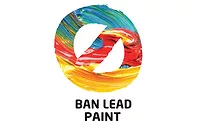Eliminating Lead Paint Through the UN Global Lead Paint Alliance
OTTAWA, Ontario — The United Nations International Week of Action on Childhood Lead Poisoning Prevention took place Oct. 21-26, 2018, and the Canadian Paint and Coatings Association (CPCA) and its member companies are working globally with the United Nations Environmental Program (UNEP) and the World Health Organization (WHO) to eliminate lead content in architectural paint and coatings.
For most Canadians lead content in paint hasn’t been a cause of concern for over 30 years because there have been regulations in place to ensure control of lead in paint products. Health Canada is mandated, under the Government of Canada’s Hazardous Products Act and Regulations, to protect Canadians from potential health hazards in consumer products. The following consumer products are specifically regulated for lead content under the Hazardous Products Act: paints, enamels and other liquid coating materials, decorative coatings on pencils and artists’ brushes, liquid coatings on children’s furniture and other articles intended for children, toys, equipment and other products for use by a child in learning or play, glazed ceramics and glassware, and kettles. Health Canada has also developed a Lead Risk Reduction Strategy for Consumer Products to protect children from exposure to lead through consumer products.
Canada has one of the strictest lead content limits in the world. In the 1990s CPCA members virtually eliminated lead content in consumer paint and stains sold in Canada through voluntary actions. When the Hazardous Products Act was enacted, CPCA members were already in compliance with the 90mg/kg total lead limit. CPCA also partnered with the federal government in 1992 on a public education campaign on how to remove lead paint from older homes entitled “Old Paint, Lead and Your Family’s Health.”
Despite these efforts, lead paint is still a health issue in many other countries, especially for children and vulnerable populations. Product safety is a commitment that extends well beyond national borders, which is why the CPCA is partnering with UNEP and the WHO to eliminate lead content in architectural paint and coatings.
While industry and government successfully worked together to restrict the use of lead paint in Canada, the International Paint and Printing Ink Council (IPPIC), of which CPCA is a founding member, is seeking to accomplish similar results globally. A leading advocate for the global elimination of lead paint, IPPIC is a formal contributor to the UN Lead Paint Alliance (LPA, formerly the Global Alliance to Eliminate Lead Paint). Established in 2010 the initiative engages national governments, industry and non-governmental organizations to enact restrictions on lead use in paints that pose public health and environmental risks, especially to children.
UNEP reports that only one-third of countries around the globe control the use of lead in paint. In many countries, lead paint is still permitted in homes, schools, hospitals, on toys, and other children’s products. Lead poisoning is responsible for approximately 500,000 deaths and 9.3 million disabilities every year. The most common sources of lead poisoning include leaded gasoline, dust and flakes from lead in paint, and contaminated air, water, and soil. According to IPPIC’s Global Market Analysis, 95% of the 20 billion liters of decorative paint produced annually does not contain lead. The remaining 5% is produced in countries where lead content remains unregulated.
This year, IPPIC is launching the UN Global Environment Facility project with the goal of establishing legislated lead paint restrictions in 40 countries by 2020. With a focus on Latin America, Africa and Asia, LPA encourages countries without lead paint legislation to adopt the UN Model Law, which is designed to adapt easily to a country’s legal framework. IPPIC and its members like CPCA are working to raise awareness of the widespread need for legislated restrictions on lead content in paints and are committed to its global elimination through the Lead Paint Alliance.
Looking for a reprint of this article?
From high-res PDFs to custom plaques, order your copy today!






